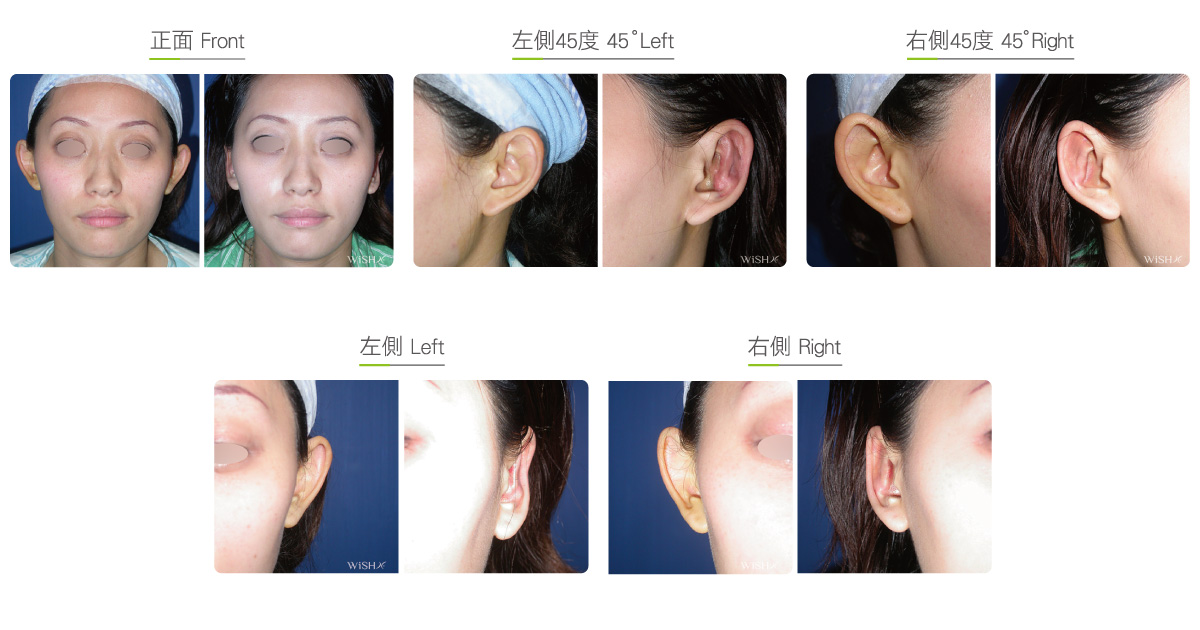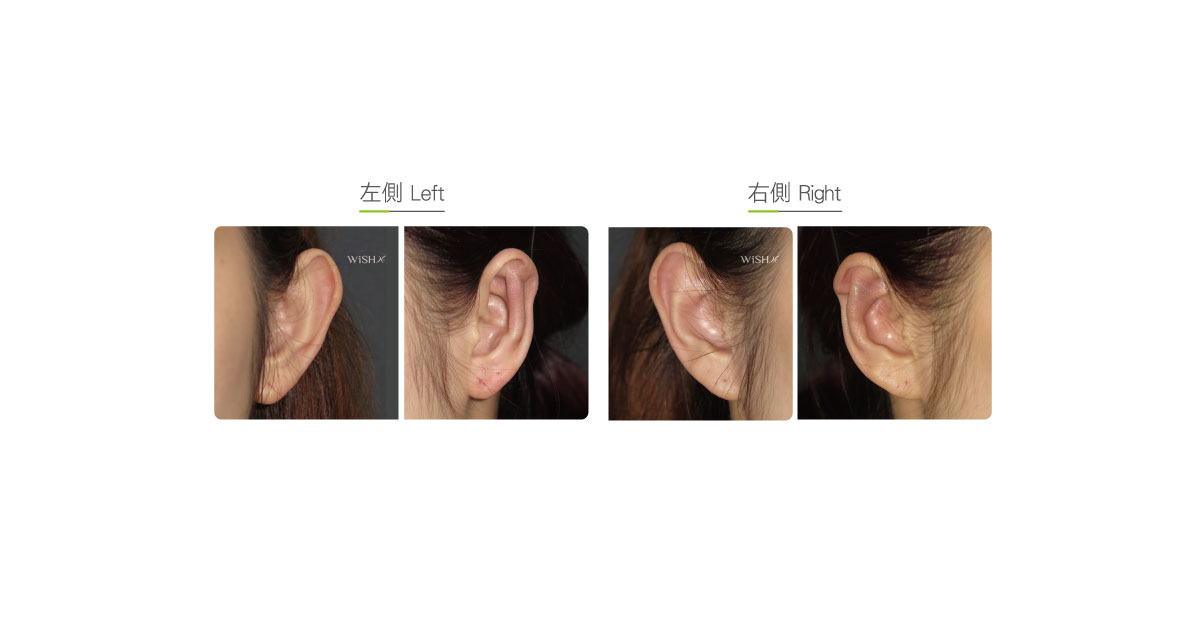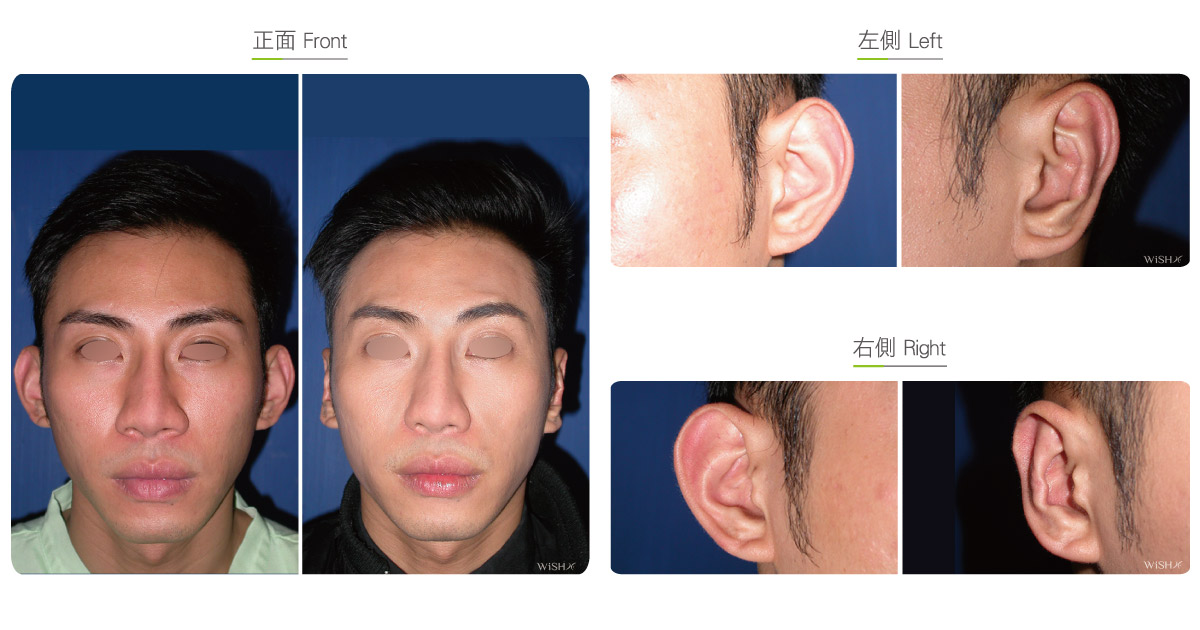Bat Ear Correction (Otoplasty)
The prominent ear, also called cup ear or bat ear, is so named as its appearance is like a cup or bat wing. It is mostly sporadic; in a few cases, it is hereditary or arises from a genetic deformity. Typical manifestations are aplasia of the pinna cartilage, and the whole ear has a deep conchal bowl appearance lacking the shape of the helix or antihelical (Y shape) fold. Further, the weak ear cartilage is unable to support the entire ear in having a normal angle; ear configurations appear prominent when viewed from the front. The normal angle of the anteverted pinna and the head (extroverted angle) should be less than 30°. If this exceeds 45°, it makes the ear protrude beyond the facial contour, and this should be corrected by otoplasty.
This surgery brings the angle back to the normal range and sculpts a normal helix. A 2cm incision is made at the back of the ear to detach the skin from the auricular cartilage, and the flat auricular cartilage is longitudinally dissected and partially removed. Then, both ends of the incised cartilage are sculpted and stitched with a non-absorbable suture based on the shape of the helix, and meanwhile, the overall pinna is fixated in the retro-auricular direction. In this way, the originally extroverted angle is reduced to a normal range, but the pinna angle needs more time to be adjusted to ensure the symmetry of both ears.
Surgical conditions
Duration
- Type of anesthesia: IV sedation + local anesthesia
- Type of incision: A 2cm incision at the border of the skin behind the ear
- Recovery: 3–5 days
- Removal of stitches: 7–10 days
General instructions
No food and water on the day of surgery
- Avoid smoking, alcohol, and irritating foods for 1 month postoperatively, and avoid strenuous activities.
- Avoid turning or stretching the ears for 3 months postoperatively to prevent cartilage rebounding.
Ideal candidates
- Patients whose pinna and cranial bone angle surpasses 45°
- Those whose ear exceeds the frontal contour of the face to greatly affect appearance esthetics
- Those without a helix or other normal structures due to an exceedingly flat appearance
- Those with an asymmetric extroverted pinna
Possible complications
- Cartilage rebounding
- Incomplete correction
- Asymmetry of both ears
Surgical advantages
-
It effectively reconstructs the normal ear angle and esthetic appearance.
-
The wound is concealed behind the ear, which makes the scar unnoticeable.
-
Surgical results are permanent and stable.
Surgical drawbacks
-
Cartilage rebounding or incomplete correction may occur.
-
Both ears may show a slight difference or asymmetry in angle.
-
The appearance of the reconstructed helix may not be as perfect or natural as that at birth.



